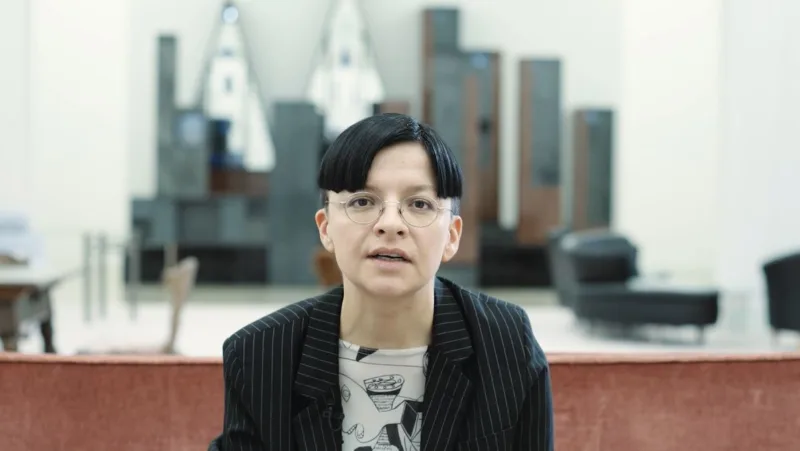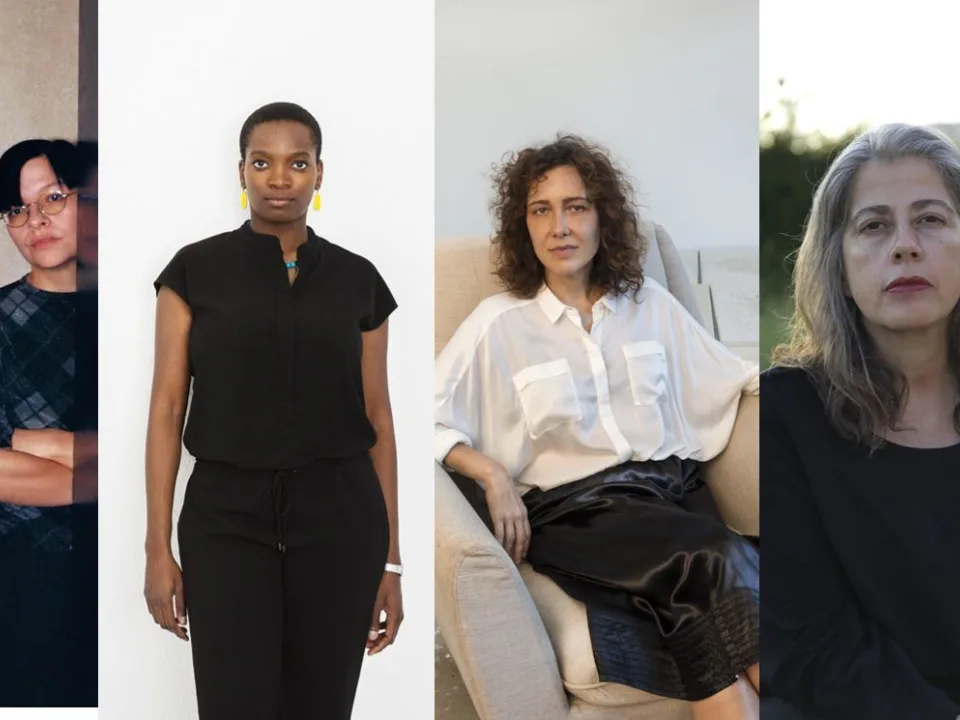Based on the art historical genre of interior painting, “Interiorities” unites four artists – Njideka Akunyili Crosby, Leonor Antunes, Henrike Naumann and Adriana Varejão – who explore the relationship between interior and exterior space.
Despite the artists’ formally divergent artistic approaches and their dissimilar cultural and social origins, their works are united by a central concern: the question of the importance of cosmopolitanism in today’s society. With a strong historical awareness, the artists demonstrate their interconnection with the world, exploring global history as one of today’s central challenges. The contextual reference point and common visual orientation constitute the concrete elements of the interior. Belonging and demarcation, introspective nationalism and culturally open world citizenship, as well as entanglement in history and social visions of the future come together like nuclei in the interior space.
The exhibiting artists are internationally established and their works highly topical. In the context of the 30th anniversary of the fall of the Berlin Wall this year, Henrike Naumann’s work is drawing extra media attention and being exhibited in numerous presentations; Njideka Akunyili Crosby and Leonor Antunes are both represented by work in international biennials and being honored with solo exhibitions at renowned institutions; Adriana Varejão is already regarded as one of the most important contemporary artists in Brazil. It is thus all the more astonishing that the works of two of the artists, Njideka Akunyili Crosby and Adriana Varejão, are to be presented for the first time in a museum setting in Germany.
Njideka Akunyili Crosby
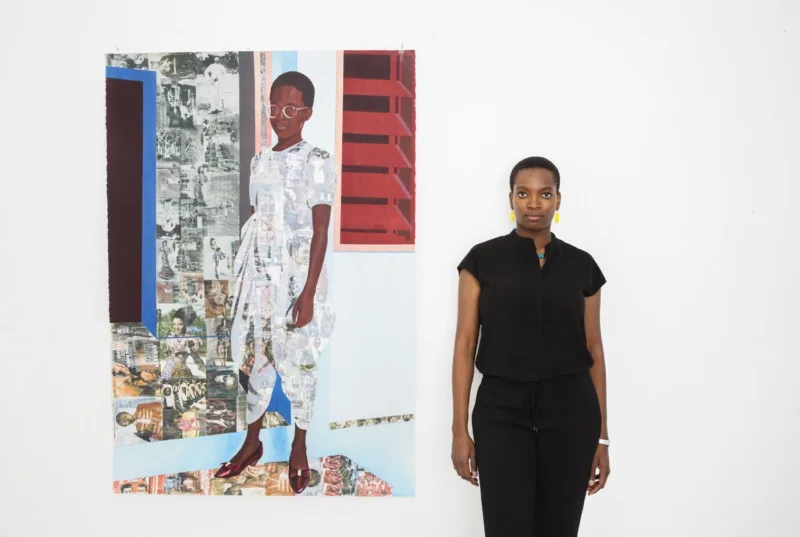
Njideka Akunyili Crosby (*1983 in Enugu, Nigeria) negotiates in her predominately large-format, dynamically patterned and colorful paintings on paper the complex cultural terrain of a life situated between two worlds: her adopted home America and her native Nigeria. Inspired by photography, fashion, architecture and design as well as her own family history, Crosby’s works often feature domestic spaces. Though the scenes in her paintings are of a private nature, and the memories familiar, the works nonetheless point beyond personal insight and the private sphere and visualize a new Afro-political attitude to life. The politically charged nature of an amorous relationship between the artist, a Nigerian woman, and a white American man subtly unfolds. The motif of the screen, the purpose of which is to shield the two affectionately facing partners inside from voyeurs on the outside, appears frequently. Crosby developed her own printing technique using acetone, which allows her to combine painting, collage and photography in a fascinating way. The artist is represented with eleven works, some serial, including a new piece created especially for this exhibition.
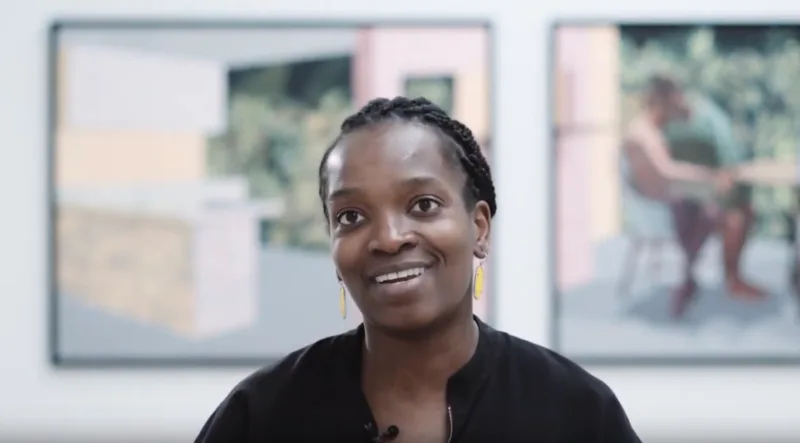
Leonor Antunes
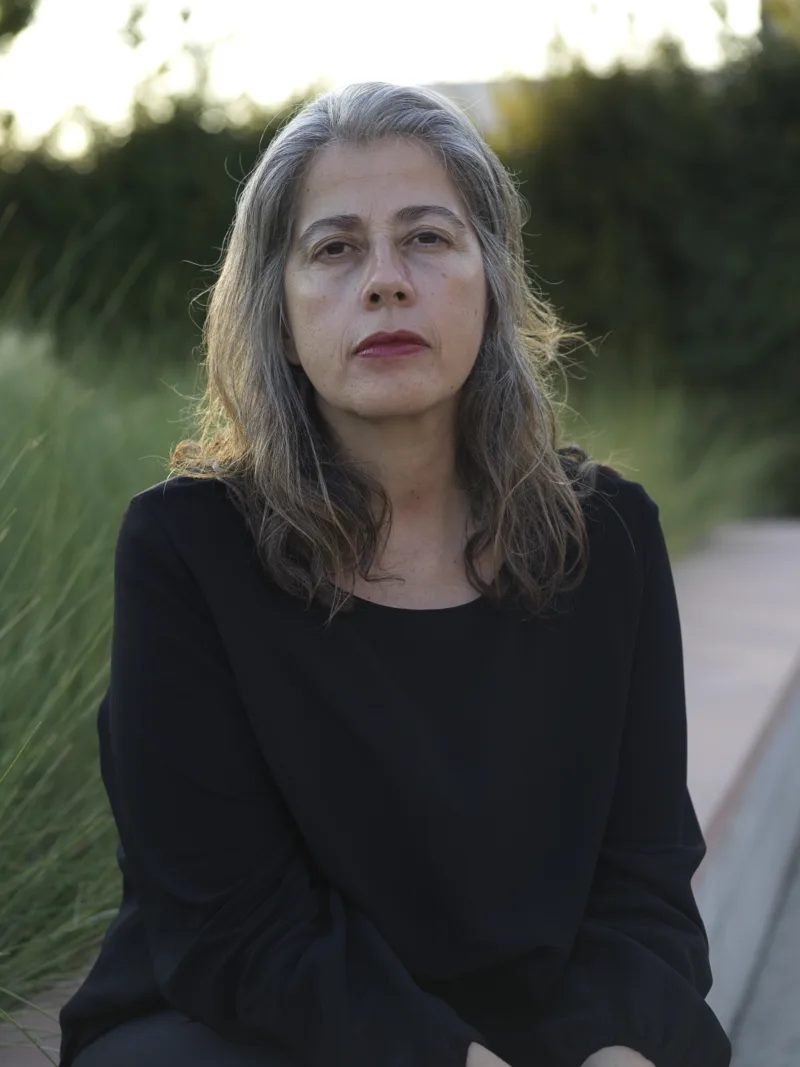
Leonor Antunes (*1972 in Lisbon, Portugal) focuses on migration and the transformation of forms and ideas and how they are dispersed across temporal and geographic boundaries. The starting point for her elegant sculptures and interventions is the exploration of art, design and architectural history. Above all, Modernism’s potential for social transformation serves as an inspiration; female artists and architects of the 1950s and 1960s, who received relatively little attention not least because of their gender, are present with their first names or initials in Antunes’ titles as well as with their formal language; such artists include Anni Albers, Ruth Asawa, Lygia Clark, Franca Helg and Eva Hesse, among others. In Antunes’ work these citations are not to be interpreted as conventional tributes; rather, these references represent the artist’s attempt to connect with another time and the pioneers of specific aesthetics. Her series “discrepancies with C.S.” (2017) consists of light elements suspended from the ceiling and recalls work by the Italian modernist Carlo Scarpa, without resembling Scarpa’s Murano glass creations. With “alterated climbing form (I, II, III)” (2017), Antunes integrated Mary Martin’s “Climbing Form” (1954) into her own work. The multi-part sculpture made of brass plates and ropes rises high into the space, resembling the gripping tendrils of a climbing plant. In reference to Anni Alber’s textile patterns, “discrepancies with A.A.” (2019) pulsates in cork-brown and black on an expansive floor surface.
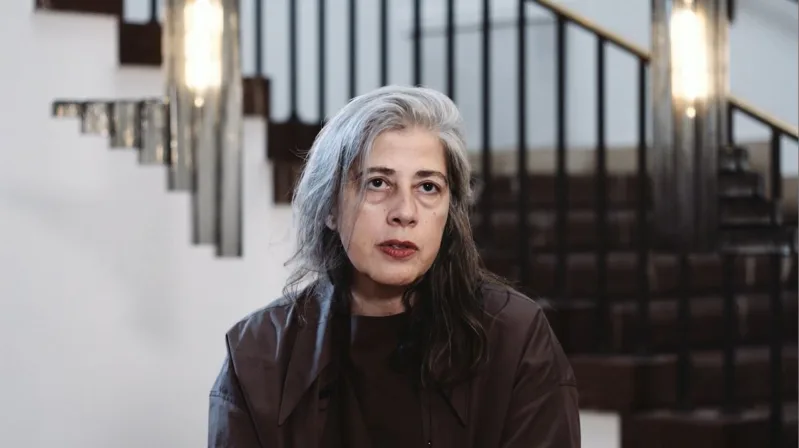
Adriana Varejãos
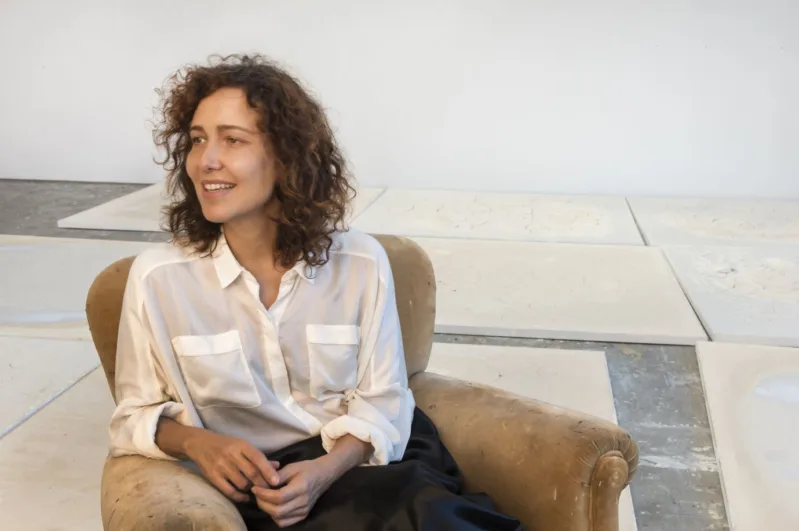
Adriana Varejão (*1964 in Rio de Janeiro, Brazil) is concerned not only with the presence of Brazil’s violent colonial history. Her multi-layered, anthropologically inspired works reflect the transnational exchange, and refer – with respect to the West’s exoticizing fantasies of cannibalism – to the forms of incorporation and transformation of the various cultural influences on which modern Brazil is based. In her multifaceted work, inspired in part by Baroque architecture, the ceramic tile appears as a recurring formal element. What looks like a painted tile, reminiscent of those created by Moroccan craftsmen during the Arab rule in Spain, turns out to be painted on canvas when observed more closely. Varejão frequently employs the motif of the wall, the boundary between inside and outside. Nonetheless, her imposing sculptures, as well as her drawings and often expansive oil paintings, bear witness to permeability. The works evoke organic forces, confronting the observer with physical fractures and eruptions and prompting associations of pain and vulnerability. Varejão is represented in the exhibition with existing works as well as three new pieces.
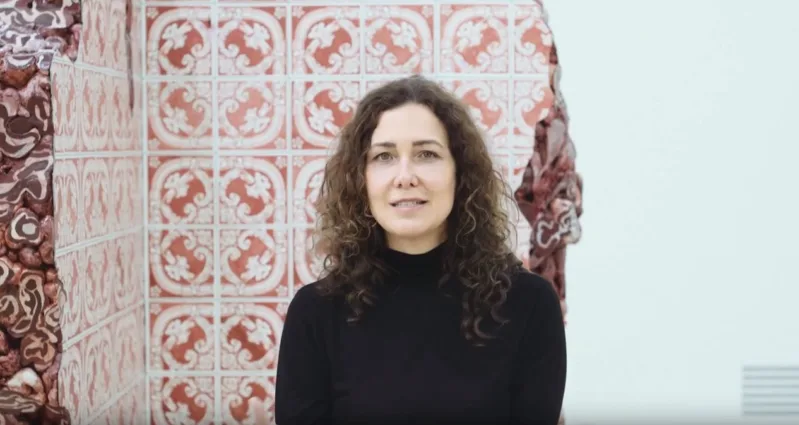
Henrike Naumann
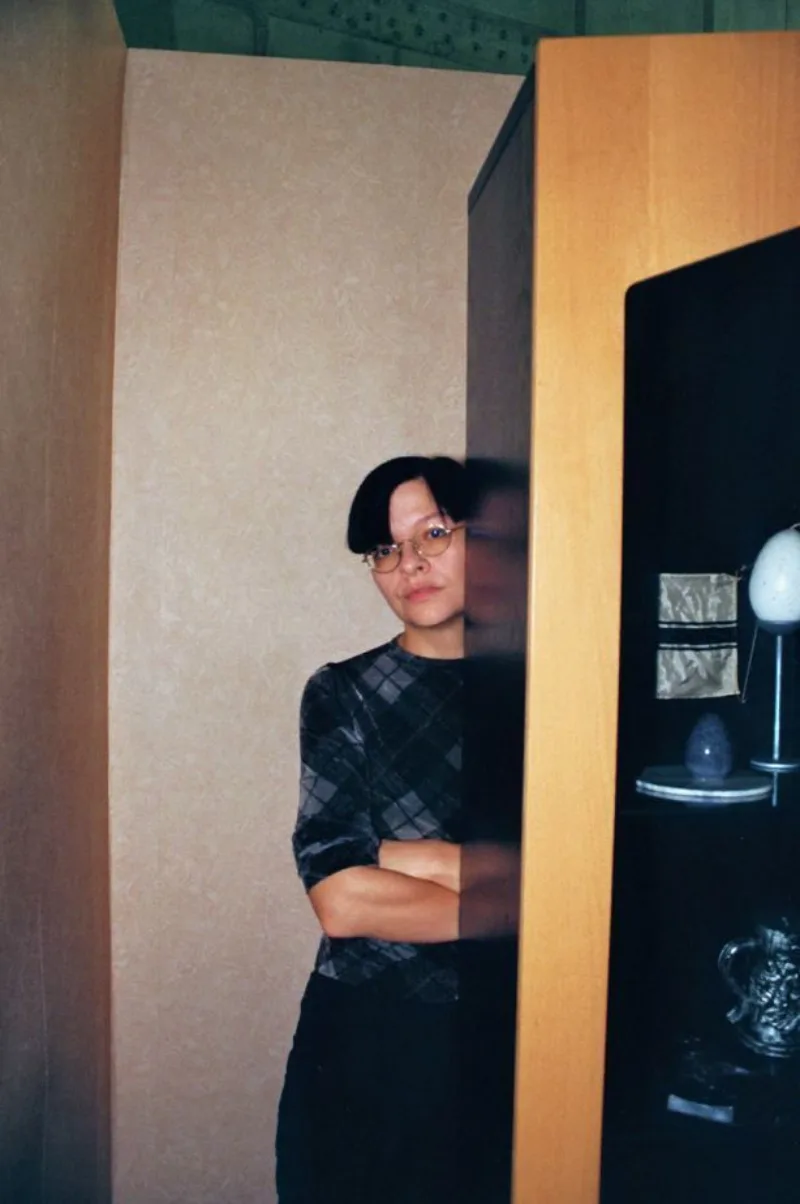
In her installations, the trained stage and costume designer Henrike Naumann (*1984 in Zwickau, Germany) examines the German-German past and right-wing ideology. Among other things, she explores how the mechanisms of radicalization manifest themselves inside one’s own four walls. Her interest also has an autobiographical component; growing up in East Germany, Henrike Naumann experienced right-wing extremist ideology as the dominant youth culture of the 1990s. Her installations transform these experiences into sharp-witted analyzes.
For Haus der Kunst Naumann has developed a spatial installation (which also includes a new video work) entitled “Ruinenwert.” The title refers to a speech given by Albert Speer in the 1930s, in which Speer expressed the idea that representative buildings of fascist Germany should preserve their testimonial character far into the future, beyond their own destruction. Ruins and castles are now gathering places for neo-Nazis and the backdrops of their meetings. At the same time, “Ruinenwert” refers to Hitler’s residence Berghof in Obersalzberg, which, like the former „Haus der Deutschen Kunst“ (“House of German Art“), was a representative building of the National Socialists. The retractable monumental windows in its “Great Hall” once provided a view of the surrounding mountains. The panorama of the Alps is replaced by an ensemble of used furniture from the 1990s in Naumann’s installation, which the visitor enters through a replica of the fireplace in Berghof. While in “Ruinenwert” the traces of the bombastic architecture of the National Socialists coincide with fragmentary details of the original interior of the “House of German Art,” the work impressively demonstrates how political ideologies and power structures manifest themselves in design, decoration and interior design.
